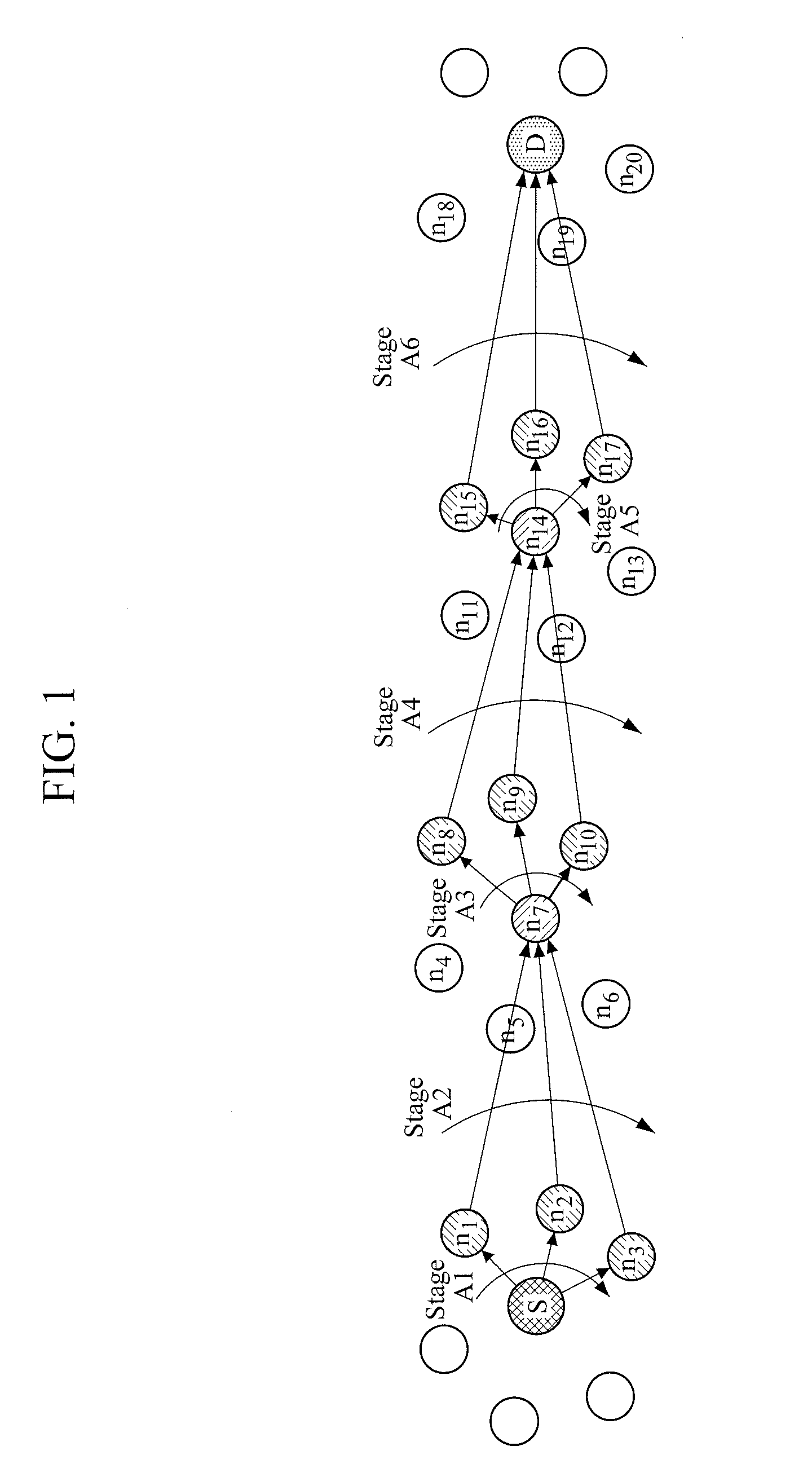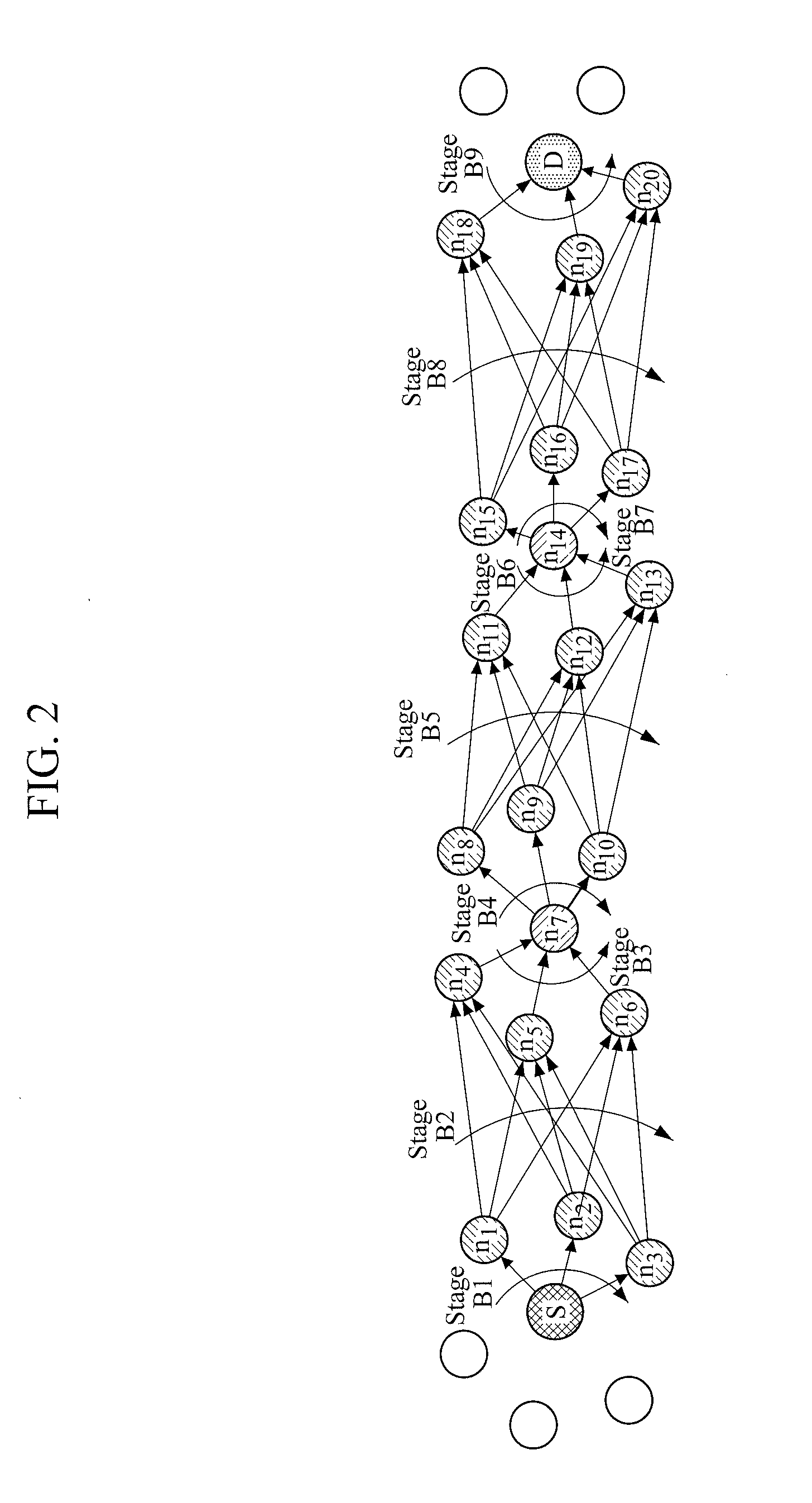Method and apparatus for hybrid virtual MIMO transmission in wireless ad-hoc network
a wireless ad-hoc network and hybrid technology, applied in the field of hybrid virtual mimo transmission can solve the problems of affecting the implementation of mimo routing, consuming a large amount of energy, and difficult to employ mimo routing in wireless ad-hoc network, so as to achieve maximum energy efficiency and limited energy
- Summary
- Abstract
- Description
- Claims
- Application Information
AI Technical Summary
Benefits of technology
Problems solved by technology
Method used
Image
Examples
Embodiment Construction
G. 16 is a diagram illustrating an example of an RN which operates in a distributed hybrid routing environment.
[0026]FIG. 17 is a diagram illustrating an example of a CN which operates in a distributed hybrid routing environment.
[0027]FIGS. 18 to 22 are examples of graphs showing changes in a routing path.
[0028]Throughout the drawings and the detailed description, unless otherwise described, the same drawing reference numerals will be understood to refer to the same elements, features, and structures. The relative size and depiction of these elements may be exaggerated for clarity, illustration, and convenience.
DETAILED DESCRIPTION
[0029]The following description is provided to assist the reader in gaining a comprehensive understanding of the methods, apparatuses, and / or systems described herein. Accordingly, various changes, modifications, and equivalents of the methods, apparatuses, and / or systems described herein will be suggested to those of ordinary skill in the art. Also, descr...
PUM
 Login to View More
Login to View More Abstract
Description
Claims
Application Information
 Login to View More
Login to View More - R&D
- Intellectual Property
- Life Sciences
- Materials
- Tech Scout
- Unparalleled Data Quality
- Higher Quality Content
- 60% Fewer Hallucinations
Browse by: Latest US Patents, China's latest patents, Technical Efficacy Thesaurus, Application Domain, Technology Topic, Popular Technical Reports.
© 2025 PatSnap. All rights reserved.Legal|Privacy policy|Modern Slavery Act Transparency Statement|Sitemap|About US| Contact US: help@patsnap.com



